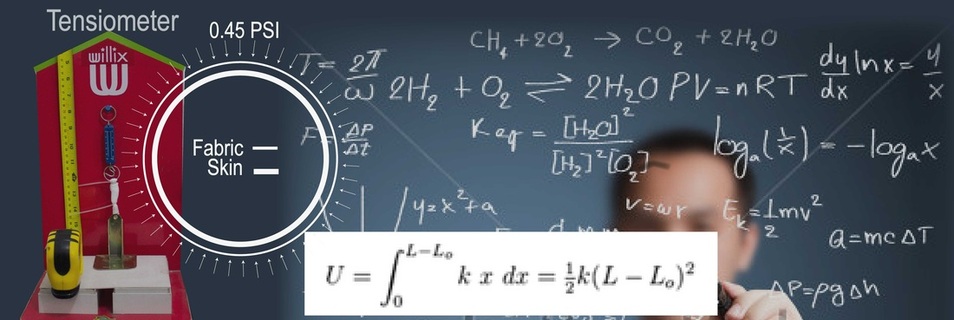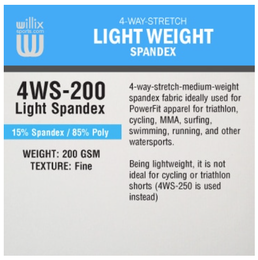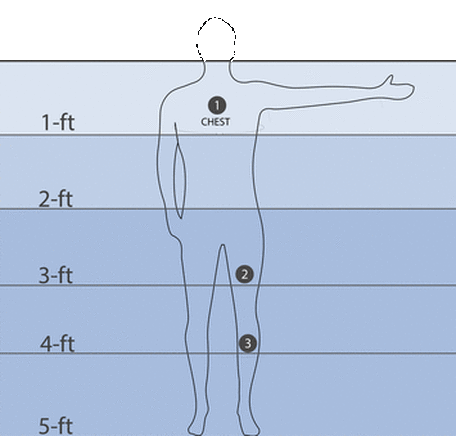Rashguard
A good rashguard shall have these 4 basic characteristics:
1) Must not have graphics that crack, fade, or peel off.
2) Must be constructed with flatlock seamer to avoid skin chafing,
3) Must have the right fit for the right purpose.
4) Must be made of quality 4-way-stretch fabric
5) Must follow the Lycra Power principles..
Willix rashguard is conceptualized and designed to satisfy these 4 characteristics. First, Willix rashguards are printed using full-body or spot sublimation technology. The technology is bleach-resistant and does not crack or peel off even after a long period of use, making it ideal for use in chlorinated pools.
Second, Willix rashguard is constructed using quality flatlock sewing machines that are far better than the more common spreader machines. Third, Willix provides a unique rashguard sizing calculator that offers flexibility and accuracy in choosing any of the 3 different fit for your specific purpose.
1) Must not have graphics that crack, fade, or peel off.
2) Must be constructed with flatlock seamer to avoid skin chafing,
3) Must have the right fit for the right purpose.
4) Must be made of quality 4-way-stretch fabric
5) Must follow the Lycra Power principles..
Willix rashguard is conceptualized and designed to satisfy these 4 characteristics. First, Willix rashguards are printed using full-body or spot sublimation technology. The technology is bleach-resistant and does not crack or peel off even after a long period of use, making it ideal for use in chlorinated pools.
Second, Willix rashguard is constructed using quality flatlock sewing machines that are far better than the more common spreader machines. Third, Willix provides a unique rashguard sizing calculator that offers flexibility and accuracy in choosing any of the 3 different fit for your specific purpose.
WANT TO SEE CUSTOMIZABLE DESIGNS?
CLICK HERE
CLICK HERE
Fabric
4WS-200 is a general-purpose lightweight 4-way stretch polyester spandex fabric ideally used for compression apparel like rashguards, Also ideal for Powerfit triathlon vest and suit, PowerFit cycling jersey and shorts, and training shirts. It weighs 200 GSM.
Compression Wear Technology
By WillixSports Engineering Team

Applying our basic knowledge in engineering mechanics, we did tensile test to determine the compression pressure that a fabric exerts on the skin. We use the Elastic Energy theory that explains how elastic energy is created when an object like spandex fabric is stretched. The energy created is potential as it will be converted into another form of energy, such as kinetic energy.
In the case of the 300 GSM spandex fabric, which is the most commonly used compression fabric, the kinetic energy transferred to the skin shows interesting results. A series of testing and calculations resulted to a derived value from 0.40 psi to 0.75, for different compression ratio factor (CRF) starting from 12% to 20%.
Interestingly, the derived compression pressure of 300GSM spandex approximates that of water. The water pressure per 1-foot of depth is 0.43 psi (for fresh water) and 0.44 psi (for sea water), which is within the derived values of 0.40 psi to 0.75 psi. This means that wearing compression apparel in certain parts of the body from the calf to upper torso will also approximate the different pressure levels exerted by water.
Hence, our calculations show that wearing compression apparel may be as effective as the well-known Aquatic therapy.
Compression Wear And Aquatic Therapy
Physical therapists usually recommend wearing compression apparel with 0.45 psi at the chest, 0.50 psi at the thigh, 0.41 psi at the upper calf, and 0.70 psi at the lower calf. These pressure levels contribute to reduced delayed onset muscle soreness (DOMS), less fatigue, improved performance, improved venous return, less edema post-competition and faster recovery.
On the other hand, some physical therapists recommend Aquatic Physical therapy as an evidence-based intervention to support restoration of function for many areas of orthopedics, including sports medicine, work conditioning, joint arthroplasty, and back rehabilitation programs.
Compression and aquatic therapy may seem entirely different from each other in approach. But a closer look and calculations show that they both actually work on the same pressure levels.
Based on theoretical calculations, there may be similarities between compression apparel and aquatic therapy in terms of pressure applications. Please refer to the diagram at the right.
1) A person wearing a compression shirt may feel the same pressure as a person standing in a pool with water up to his chin.
2) A person wearing a compression short and calf may feel the same pressure as a person standing in a pool with water up to his belly.
On the other hand, some physical therapists recommend Aquatic Physical therapy as an evidence-based intervention to support restoration of function for many areas of orthopedics, including sports medicine, work conditioning, joint arthroplasty, and back rehabilitation programs.
Compression and aquatic therapy may seem entirely different from each other in approach. But a closer look and calculations show that they both actually work on the same pressure levels.
Based on theoretical calculations, there may be similarities between compression apparel and aquatic therapy in terms of pressure applications. Please refer to the diagram at the right.
1) A person wearing a compression shirt may feel the same pressure as a person standing in a pool with water up to his chin.
2) A person wearing a compression short and calf may feel the same pressure as a person standing in a pool with water up to his belly.





